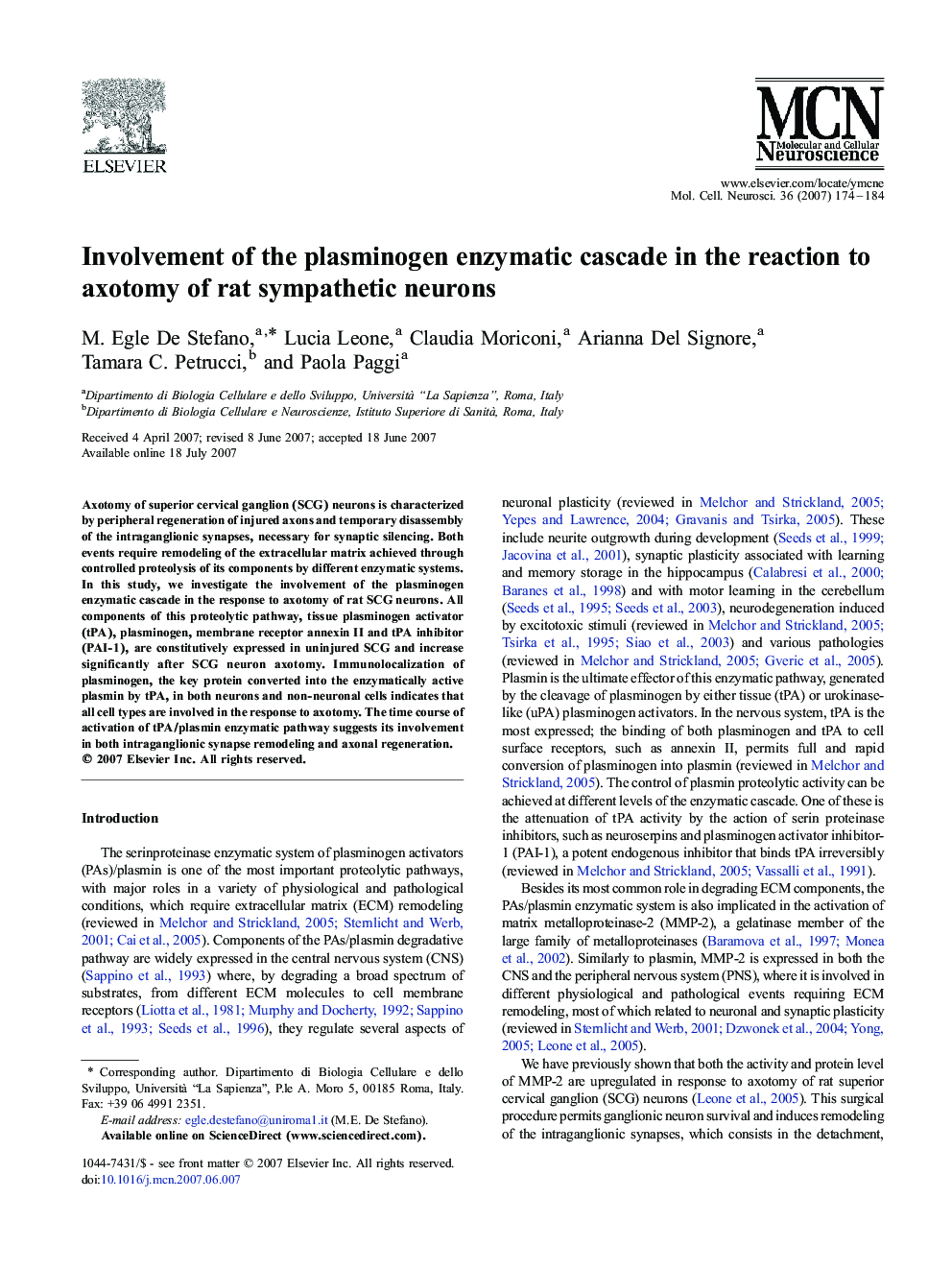| Article ID | Journal | Published Year | Pages | File Type |
|---|---|---|---|---|
| 2199204 | Molecular and Cellular Neuroscience | 2007 | 11 Pages |
Axotomy of superior cervical ganglion (SCG) neurons is characterized by peripheral regeneration of injured axons and temporary disassembly of the intraganglionic synapses, necessary for synaptic silencing. Both events require remodeling of the extracellular matrix achieved through controlled proteolysis of its components by different enzymatic systems. In this study, we investigate the involvement of the plasminogen enzymatic cascade in the response to axotomy of rat SCG neurons. All components of this proteolytic pathway, tissue plasminogen activator (tPA), plasminogen, membrane receptor annexin II and tPA inhibitor (PAI-1), are constitutively expressed in uninjured SCG and increase significantly after SCG neuron axotomy. Immunolocalization of plasminogen, the key protein converted into the enzymatically active plasmin by tPA, in both neurons and non-neuronal cells indicates that all cell types are involved in the response to axotomy. The time course of activation of tPA/plasmin enzymatic pathway suggests its involvement in both intraganglionic synapse remodeling and axonal regeneration.
